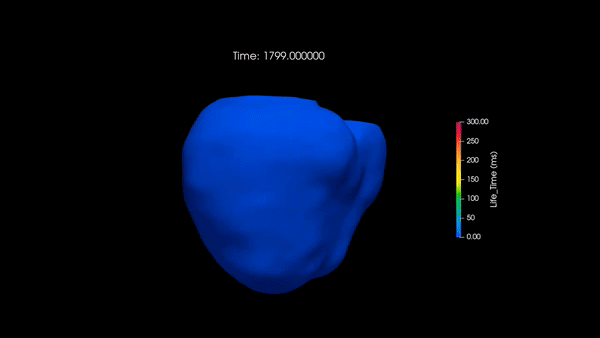The group's activities are divided, on the one hand, into research oriented towards biomedical simulation (electrophysiology and fluids) and, on the other, research into automatic learning models (classical + deep learning) capable of handling large volumes of data, thus offering very useful applications for the medical sector based on the multiple simulation results derived from classical techniques and acquired in different projects.
Cardiac Electrophysiology
The research group works on the modelling and multiscale simulation of the activation process of cardiac tissue, in order to characterise and predict different pathologies. The group has high-resolution simulation software that allows fully synthetic electrocardiograms to be reproduced, with the possibility of simulating different pathologies. Another active line of work in this field is the estimation of the cardiac conduction system using analysis of data acquired during surgical practice.
Fluid Simulation
The CoMMLab group uses computational fluid mechanics techniques applied to different fields. In biomedical engineering, the group uses fluid models for the simulation of the vascular system, especially in large vessels, to analyse and predict pathologies such as aneurysms. In the field of computer graphics, non Newtonian fluid models are developed with applications mainly in interactive simulation (Virtual Reality, Videogames, ...) and in simulations for physics-based animation and special effects.
Machine Learning
In addition to the experience acquired over the years by the members of the group in different areas of simulation, mainly in bioengineering and mechanical engineering, recent advances in machine learning have been assimilated by the group as another way of exploiting the results of its simulations. The group has applied these techniques to the development of pedestrain models applied to crowd simulation. It also allows a further step in transferring the results of the simulations to new medical and industrial sectors (i.e. predictors of ectopic foci, aneurysms, arrhythmia detectors, etc.).



